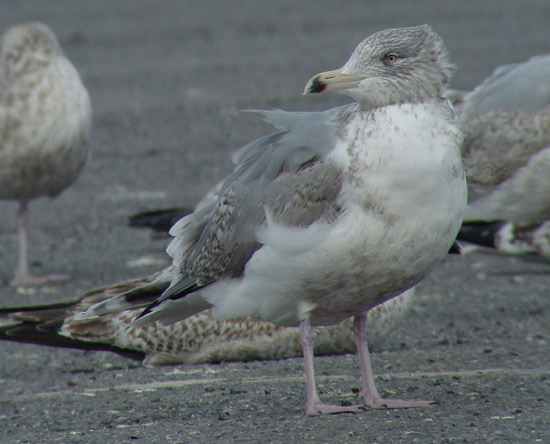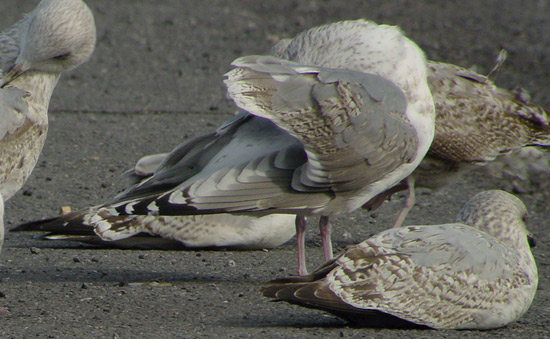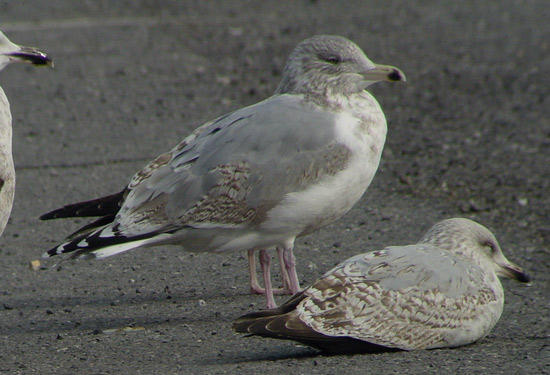 Herring
Gull - Zilvermeeuw (argentatus & argenteus): sub-adult March
Herring
Gull - Zilvermeeuw (argentatus & argenteus): sub-adult March
(last update: 08 december 2003)
Home
Links
to Gull Sites
Gull Taxa
Gull Topography
Grey & Colour Charts
Locations in NW Europe
Summaries of Articles
About ORG
@
(3 images) Herring Gull sub-adult (argentatus), March 18 2003, Boulogne-sur-Mer, France (50.42N,1.34E).
This is large and powerful argentatus, nicely demonstrating the combination of adult-like outer primaries and the greater wing-coverts and the lower tertials still obviously barred. Note e.g. the complete white tip of P10, where the mirror merges with the white tip. But this individual also shows clear immature features: extensive black on the bill, the clear winter streaking and immature brown feathers in the belly. A few median coverts, a few inner greater coverts and the upper tertials have been moulted once again and appear much more adult-like grey than the adjacent wing-coverts and the lower tertials. Note the yellow-orange orbital ring.
Last autumn sub-adult Herring Gull, so-called "third winter" birds (4cy by February) have replaced the all-brown immature primaries for more adult-like primaries, which show white tips when fresh, a grey basal half and often one or two mirrors (P9 and P10). A small minority doesn't show a mirror at all, as this bird shows. The size of the dark patches and the amount of black in the outer primaries is more extensive when compared to adults: there is often a broad dark sub-terminal band on P5 and a dark faint spot on the outer-web of P4. The dark patches are not sharply demarcated as in adult, but the dark outer-web gradually dissolves in the grey inner-web. Note the dark vermiculated markings on the tail-feathers in this individual.
In argenteus, from January to April, 4cy birds moult to so-called "third summer" plumage. By April, the head and under-parts will appear all-white. The tail-feathers, wing-coverts and primaries are not replaced, therefore most birds strongly resemble "third winter" birds, although the white primary tips wear away and dark patches start to bleach. The iris is often yellowish, the orbital ring yellowish-orange and the bill predominantly yellow with a red gonydeal spot and limited black markings along the culmen by April.


